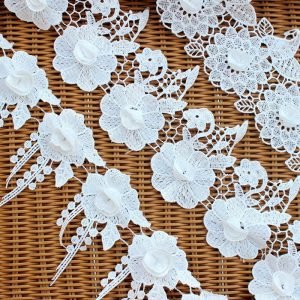The lace market, encompassing both traditional lace fabrics and shoelaces, has seen dynamic shifts due to evolving consumer preferences, economic conditions, and advancements in textile manufacturing. Estimating the price change of lace in 2026 requires an analysis of various factors, including raw material costs, global demand, production innovations, and market trends.

The global lace industry has been influenced by fashion trends, interior decor preferences, and the growing demand for sustainable textiles. The resurgence of lace in haute couture and bridal fashion, coupled with its use in home furnishings, suggests a steady demand. Additionally, the shoelace market has seen increased interest due to customizations, technological advancements, and sustainability concerns.
Consumer preferences are shifting towards eco-friendly and ethically sourced lace products, driving demand for organic cotton and recycled lace materials. This trend could lead to a moderate increase in prices due to higher production costs associated with sustainable practices.

The cost of raw materials, particularly cotton, polyester, and silk, plays a crucial role in determining lace prices. Fluctuations in global supply chains, geopolitical tensions, and climate conditions impacting cotton production could result in cost variations. If raw material prices increase in 2026, lace prices will likely follow suit.
Technological advancements in textile manufacturing, such as automated lace-making machines and 3D printing techniques, could balance production costs by enhancing efficiency and reducing labor expenses. However, the adoption of these technologies might initially lead to higher prices due to investment costs.

The lace market is also susceptible to global economic conditions and trade policies. Inflation rates, labor costs, and tariff regulations in key manufacturing countries, such as China, India, and European nations, will impact lace pricing. Trade agreements or disruptions, such as supply chain bottlenecks or import/export restrictions, could lead to price volatility.
Additionally, consumer purchasing power will influence demand elasticity. If economic conditions improve in 2026, higher disposable incomes may support price increases, whereas economic downturns could restrain price growth.

Considering these factors, the price of lace in 2026 is expected to experience a modest increase, likely within a range of 3-6% year-over-year. This estimation is based on:
Inflation and supply chain fluctuations: Moderate inflation and potential material shortages may contribute to a price rise.
Sustainability trends: A shift towards eco-friendly materials could drive up costs.
Technological advancements: Innovations may offset rising material and labor costs, stabilizing the market.
Global economic conditions: A stable or recovering economy will support market growth and price increases.

While exact figures depend on unpredictable market forces, businesses and consumers should anticipate a gradual upward trend in lace prices through 2026. To navigate this, industry stakeholders may focus on optimizing production efficiencies, diversifying supply sources, and investing in sustainable alternatives to maintain a competitive edge in the evolving lace market.

